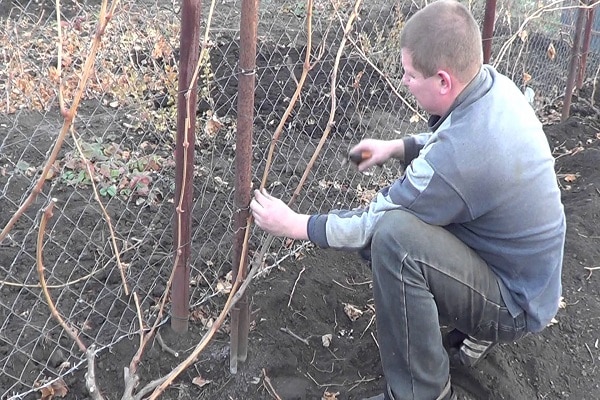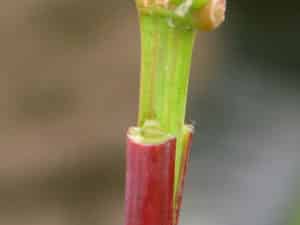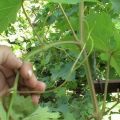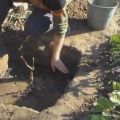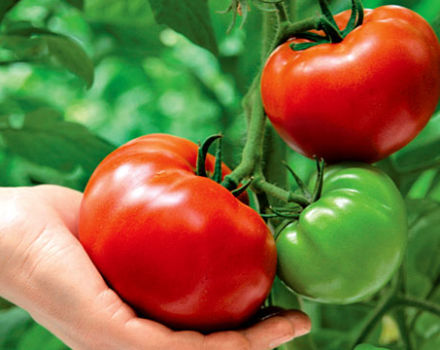How to properly tie grapes to a trellis in spring, methods and step-by-step instructions for beginners
How to tie up the grapes correctly, every amateur should know, on the site of which at least one bush of his favorite berries grows. It is the garter that is the most important in caring for the plant, on which both yield and decorative properties depend. Under natural conditions, the grape grows shapelessly and is a liana weaving along the ground, but such a bush will in no way decorate the garden. In addition, harvesting will be difficult, and its quality characteristics will deteriorate.
Why tie up grapes?
A garter is required for grape bushes so that they do not entangle all nearby buildings and trees and create additional problems and inconveniences for the owner. If the garter is correctly and timely done in early spring, then additional benefits will be provided:
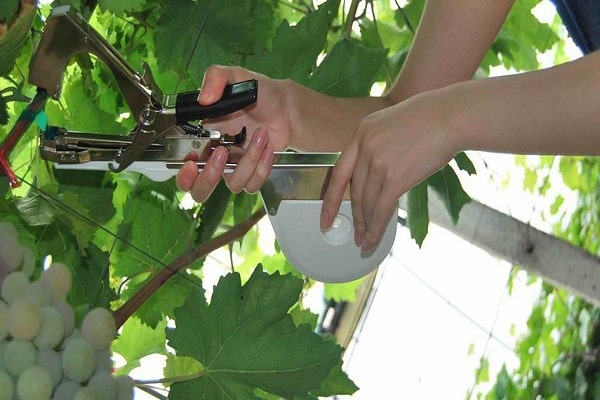
- due to improved ventilation, the risk of developing fungal diseases is reduced;
- good penetration of sunlight into the depths of the bush is ensured, as a result of which the fruits are formed large, with rich taste, and the time of their ripening is significantly reduced;
- a well-groomed grape bush looks aesthetically pleasing on the site;
- the procedure for caring for a neat and tied bush is greatly simplified;
- pollinating a tied vine is easier and faster, since insects have access to it;
- the correct spring garter of the grapes ensures that the branches will grow the same size and will not stretch.
If a gardener wants to achieve not only an aesthetic appearance from his garden, but also a high yield, the garter of grape bushes must be included in the list of spring garden work.
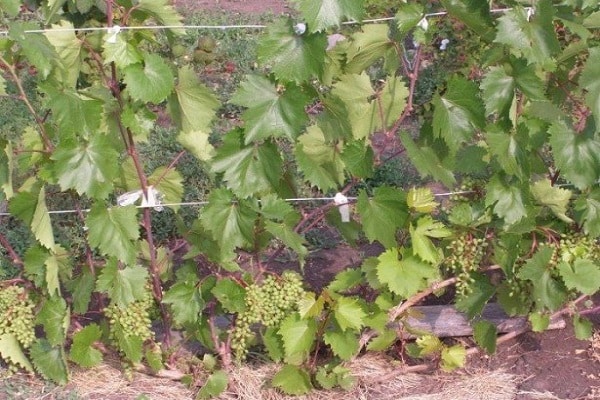
Best time for a garter
Tying grapes in the spring for novice summer residents seems to be a difficult task that requires a lot of time. Not all of them know that there are two main types of this manipulation developed: green garter and dry garter. Their difference lies in the timing of the work.
The first option is performed until the sap flow begins in the vine. The buds should not have time to bloom, otherwise many of them will be damaged and the yield will noticeably decrease. It is important to know that when tying grape branches at an acute angle equal to 45-60 or in a strictly horizontal arrangement, the bunches are massive, and the fruits ripen very tasty.
Holding a green garter falls in the summer.Its main task is to prevent fragile twigs from suffering from winds and heavy rainfall.
The branches are placed strictly at an angle equal to 90 degrees. This procedure is permissible only with those plants that have a long sleeve or a high stem. As the length of the vine increases, the garters are repeated. Such procedures can be carried out only before the beginning of flowering or the formation of ovaries, so as not to injure the forming brushes. In total, at least 4 such procedures are carried out per season.
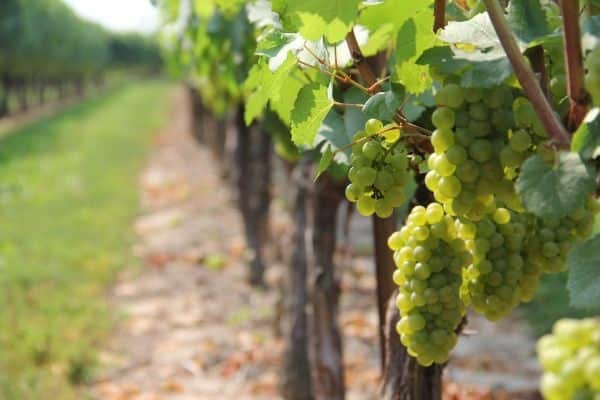
Which material should you choose?
Garter material for grapes is selected competently, responsibly, otherwise there is a risk of damaging the plant. To tie the twig to the support, use strips of soft fabric, twine or thick wire is also suitable. In no case are fishing line or thin steel wire used, which can injure the plant, as a result of which the processes of sap flow are disrupted, and the branches can die off.
The fixation of the shoots is made loosely so that no squeezing occurs during their growth. Rigid fastening is used only during the green garter, since new sprouts develop more slowly and easily break under the influence of a gust of wind.
Vertical pillars for supports are made of wood or metal. Tiers of horizontal beams for garter grapes are made of galvanized metal wire, the thickness of which ranges from 1.8 to 2.4 mm. Wooden supports are preferably made of oak, poplar, alder or mulberry. These breeds are less susceptible to rotting than others and last much longer.
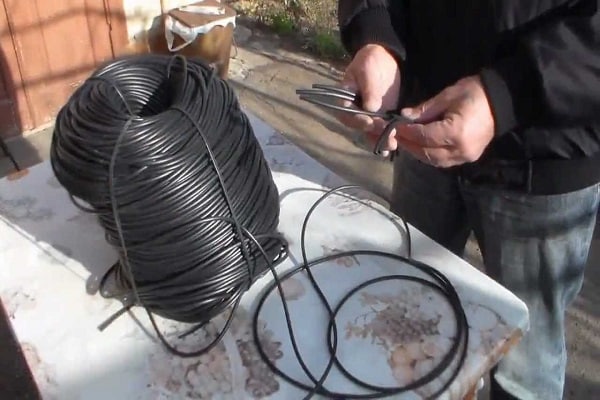
Garter methods and main steps
The main methods used for tying grape vines are dry and green. When dry, all procedures are done with lignified and already cut off shoots. They are fixed on the trellis at the lowest tier. If the load turns out to be large, then the tier located above is also involved. They are laid horizontally, and only last year's shoots, intended to form the future trunk, are placed vertically. Old, frozen or damaged branches must be removed.
As soon as the length of the young shoots reaches half a meter, proceed to the green garter. This will help prevent strong gusts of wind from damaging the fragile vine and intertwining it with each other. Green twigs are fixed exclusively in an upright position and distributed in such a way that there are no more than 3 of them in one node.
Otherwise, pollination will be difficult, which will certainly be reflected in the quantitative and qualitative characteristics of the resulting crop. When tying grapes, the material used is initially wrapped around the support wire, and then with its help the vine is attached. This helps not only to prevent chafing of the branches, but also to protect them from burns caused by overheating of the wire in hot weather.
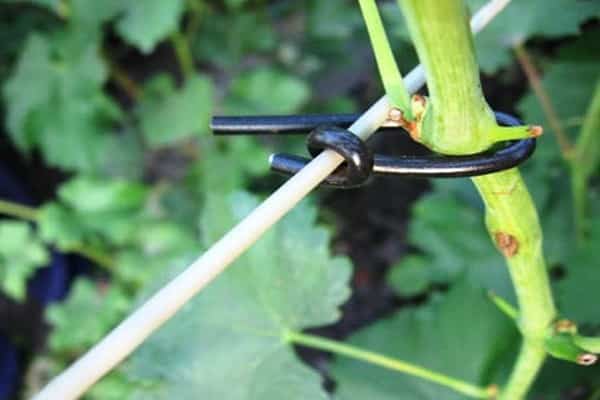
How to tie up adult grapes?
If there is an adult grape bush in the country, then it must certainly be properly tied up in order to harvest a bountiful and high-quality harvest in the future. Long sleeves are fixed on the constructed trellis at an acute angle. Replacement knots should be fixed on the bar located at the very bottom. The twigs, which should bear fruit this season, are twisted around the wire and fixed on the constructed trellis with a cloth or twine.
If it is not possible to suspend all the processes in a horizontal position, then part can be fixed at an angle.
The garter of an adult large bush differs from similar manipulations with a young plant in that the sleeves are placed at an angle of 90 degrees.All actions are performed with the utmost care, since at the slightest careless movement, fragile grape twigs break.
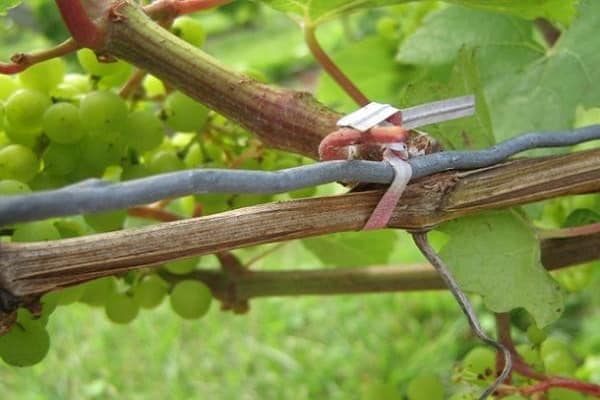
Features of the garter of a young plant
In the first year of life, the grape bush is attached to small wooden pegs. It is allowed to install a small trellis for it, made of a special mesh. Fastening is done with special materials that will not harm the tender young vine.
When installing a coarse mesh as a trellis, it is screwed to supports made of metal or wood. As they grow, the shoots themselves will trudge vertically upward.
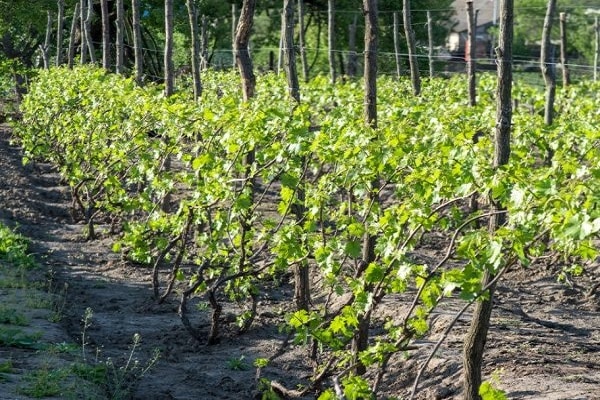
How to tie on trellises?
The trellis is a kind of fence made of a pair of pillars and several wires stretched across, to which the grapes will be tied. To build it, pillars made of wood or metal are buried in the ground at a distance of 3 meters. The depth of the pit is chosen 50 cm. The diameter of the column is 10-15 cm, its length is selected up to 2 meters.
If the future support is wooden, then it is better to give preference to hardwood, which is less susceptible to aggressive environmental influences. To increase its service life, the lower part is dipped in a prepared solution of copper sulfate, after which it is allowed to dry and coated with liquid resin. This procedure makes the vine garter even more durable.
The first tier of wire is planned at a distance of 40 centimeters from the soil level. The further arrangement of the tiers is projected at the same distance from the previous one. Their number directly depends on the age and size of the grape bush. The longer the shoots are, the more tiers of wire are built. As a rule, for small plants a couple of tiers are enough, and for medium-sized plants - up to 5. It is necessary to take into account in advance that when attaching the vine to the trellis, it does not bend and is sufficiently elastic. The cross-section of the wire is selected according to the strength of the bush.
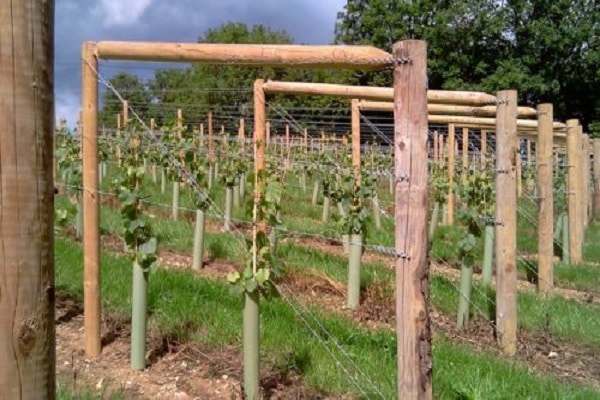
With the described garter method, grape care is simplified. The design is not expensive, since it does not require the use of a large amount of expensive materials. It is quite possible to build it from improvised means. Attaching the vine to the trellis is easy, so even a beginner can cope with this task. It should be noted that this technique is appropriate only for fixing medium and small plants. Under the weight of a large and powerful bush, the trellis will break. It also makes it possible to form a limited number of fruiting vines.
By their design, trellises are divided into single-plane and two-plane. The latter is a pair of ordinary trellises located on either side of the vine row. At the base, they are connected to each other at an angle. During the construction of the first of them, the distance between the support pillars is not less than 60 centimeters, and their height is equal to the distance between the vine rows.
This is done with the aim of making the structure as stable as possible. If you need to tie shoots to a height of more than 2 meters, then use a stepladder or ladder. You can tie up grapes with 6 or 8 long sleeves to such a trellis. A two-plane structure requires a lot of materials, which increases its cost. In addition, when preparing the vine for the cold winter, you will need to remove it from the wire.
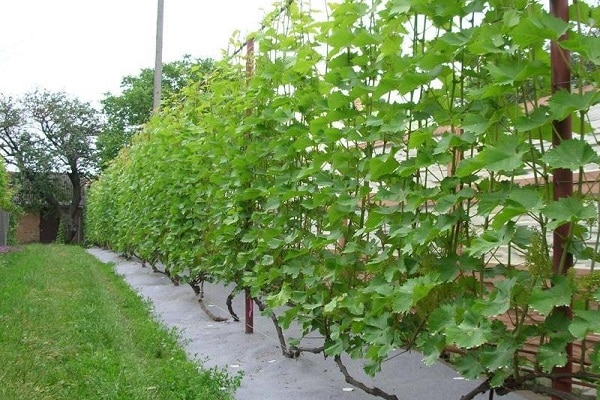
To tie the vine to the trellis in spring, specially designed scissors are used, which accelerate the process of forming loops. This is especially true if there are a lot of bushes on the site. Wire wrapped in paper is also used, which also allows for faster tying. Modern technologies do not stand still, because summer residents often wield an elastic tape and a stapler for tying grapes.
When the garter is carried out, the skeletal branches are initially fixed along the tier located below. In no case is it recommended to take wire or fishing line for such purposes, since during growth, development or under the negative impact of strong winds, the branches are damaged. Secondary shoots are tied to the second tier at an acute angle. Young twigs will be attached to subsequent tiers. It is not recommended to direct all the branches vertically upward, because this is not only fraught with a decrease in yield, but also a loss of decorative qualities.

So that during the growing season the vine does not hit the metal support, it is recommended to fasten it with a figure eight. For this purpose, the twig itself is first wrapped with a fabric garter, and then attached to the wire. The procedure is carried out slowly, tying each vine separately. Collecting it in bunches will not bring a positive result.
Fruit-bearing branches must be attached horizontally, and arrows at an acute angle.
Can you grow without a garter?
Tying grapes has a positive effect on the yield and decorativeness of the bushes, but is an optional procedure. Plants may well develop without it. In this embodiment, instead of the trellis, a metal support is installed through which the vine is thrown. In this case, one must take into account the fact that in order to prepare the bush for wintering, it will have to be removed from the support.
Therefore, this technique is advisable only when cultivating grapes of medium and low height. The bushes must be correctly formed, otherwise the brushes will not have enough lighting, the plantings are poorly ventilated, and, as a result, fungal diseases develop, the yield decreases.
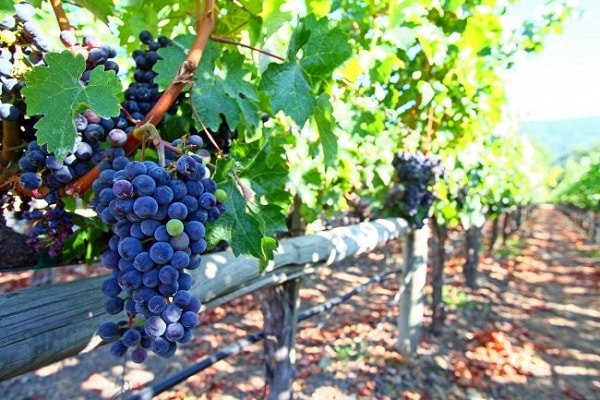
In order to get a properly formed grape bush, in the first year, during the autumn pruning and preparation for winter shelter, only a few buds are cut from the vine, and its length is left about 1 meter.
In the second year, 2 processes are formed at the apex, and from the branches located below they form replacement knots with two buds located on it. From the upper branch, a fruit arrow is formed with a pair of buds on it. In the third year, the procedure is repeated, thus obtaining another fruiting link.
Growing vines without garters simplifies the procedure, but is not a convenient and practical way, for example, as if using a standard trellis.
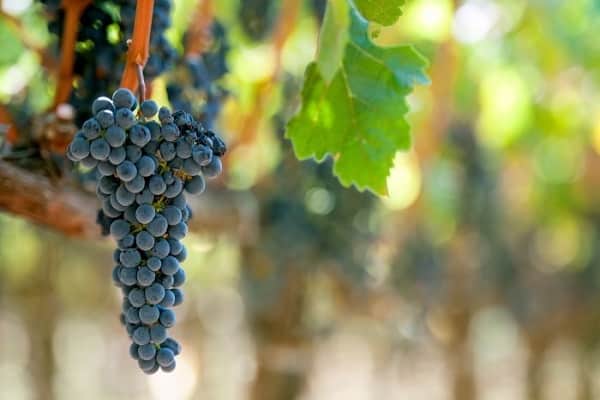
Common mistakes
Errors in the implementation of the garter of the vine in the spring most often occur among winegrowers who do not have practical skills. Experienced gardeners perform all manipulations easily, almost with their eyes closed. Beginners make mistakes more often due to lack of practical skills and doubts. First of all, they fasten the vine that survived the cold winter to the trellis with the help of a fishing line or rigid wire, which provokes a slow movement of the juice, weakening and death of the vine.
The second common mistake is that gardeners attach grape shoots to a support or a built trellis in a strictly vertical position. In this case, the yield and weight of the formed brushes are noticeably reduced.
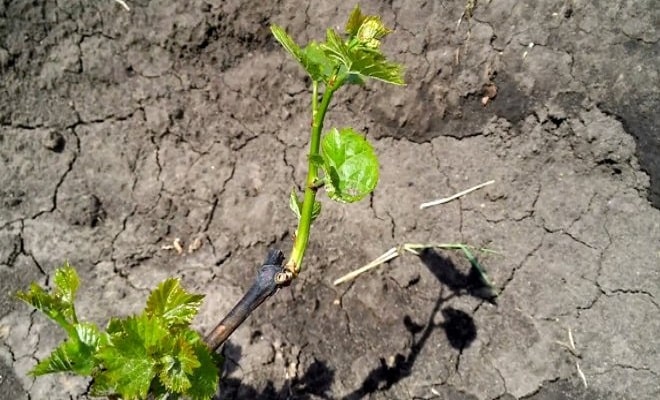
The third common case is when twigs are attached to the upper ends. After a certain time, the growth of such a grape shoot is directed to the side, and the internodes located nearby simply dry out.
Another common case of making mistakes is strong bending or bending of the vine. Gardeners, one might say, make arcs or rings out of it. As a result of such actions, the paths along which nutrients enter the plant are pinched, and the grape bush begins to starve.
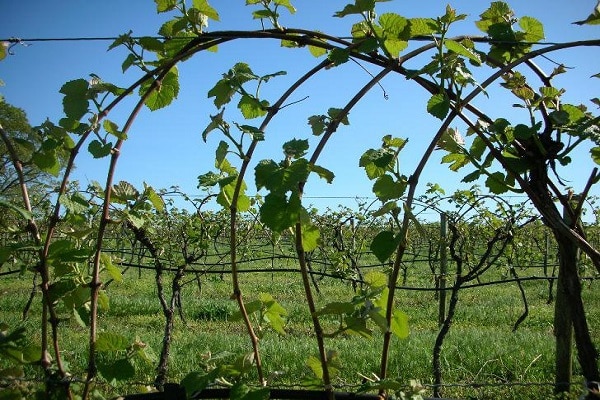
All of the above mistakes must be taken into account not only by beginners, but also by experienced winegrowers, so as not to allow them on their site during all the manipulations. After all, it is from the correctness of the garter that not only the yield of the grape bush, but also its general condition largely depends.
If you want to harvest a bountiful, beautiful and tasty harvest of useful berries, then you should take some time to study theoretical material on grape garters and apply the knowledge gained in practice. It is necessary to act carefully so as not to harm the plant and not injure it during the main procedures. The grapes will surely thank you for their care with a generous harvest.
